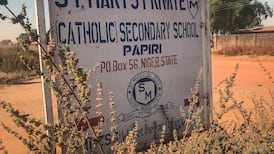The nature of armed conflict in Africa is rapidly changing, a new study that annually catalogues all reported instances of political violence and conflict across the continent has claimed.
The report released by the University of Sussex-based Armed Conflict Location and Event Data Project (Acled), maintained large-scale military engagements in Africa are being replaced by smaller, violent encounters involving multiple stakeholders.
"The overall patterns are clear: battles and large-scale wars are on the decline, as they have been for quite some time," stated Acled's Conflict Trends: Real-Time Analysis of African Political Violence report.
The study says that “multiple co-existing agents” such as local militias, protesting civil society organisations, external groups such as Islamic State seeking local partners, and rebel groups, are taking the place of official state-run armies as the main actors in many violent conflicts.
“These groups may use similar forms of violence [to traditional armies] – including attacking civilians, bombing, clashing with security forces, rioting – but they are distinct in their goals,” the report maintained.
Forceful approach
However, African governments still adopt a forceful approach to maintaining power, as Acled revealed that about 34 per cent of incidents in 2016 involved state-sponsored or aligned forces, which is high compared to its findings in recent years.
In terms of the most violent places in Africa in 2016, Libya, Nigeria, Somalia and South Sudan are still the continent's major crisis areas.
The four north African countries have experienced significantly more violence and fatalities than anywhere else, accounting for 33 per cent of all violent conflict in Africa last year, stated the study.
Of those crises, Somalia remains the most active, having almost three times the violence levels of the three other countries, which each had approximately 740 armed, organised events last year.
“In effect, Somalia’s violence is equal to the combined violence of Libya, South Sudan and Nigeria,” said the report.
Yet the fatality data Acled has pulled together also shows that Somalia’s incidents of conflict are less fatal. Nigeria has the highest death ratio at more than 6.0 fatalities per event, compared to 2.5 per event in Somalia, 4.5 for South Sudan and close to 4.0 per event in Libya.
Civilian targets
Other striking differences between two of the crises relate to the targets of the violence. In Nigeria, those killed are overwhelmingly civilians rather than soldiers who die in battles, while the Libyan conflict appears to avoid direct targeting of civilians.
The number of active violent groups in two of the four worst countries has also increased dramatically. Last year there were 66 violent groups in Libya, more than double the number that existed in 2013, whereas in Nigeria the number has gone from 53 to 93 over 12 months and is attributed to sectarian violence.
The number of violent groups in Somalia (156) and South Sudan (69) has decreased slightly from last year, stated the report.
Under-reported crises also constituted a large proportion of violence across African states in 2016. These include the governance crisis in Burundi, the ongoing wars in Sudan, Ethiopia's protesting and conflict, and the increasing violence activity throughout Mozambique.
“The political nature of these low-level conflicts is such that, unless political solutions to the crises are found, violence is likely to persist or to escalate in the near future . . . particularly in Burundi and Mozambique,” said Acled’s researchers.
Mozambique went from 19 violent incidents in 2015 to 92 in 2016. While conflict between armed groups declined in Burundi, that development simply reflects the changing dynamics of the country’s violence, said the researchers.
“Rather than seeking direct confrontation, government forces and armed militias widely resorted to violence against unarmed civilians and targeted political assassinations,” they claimed.












